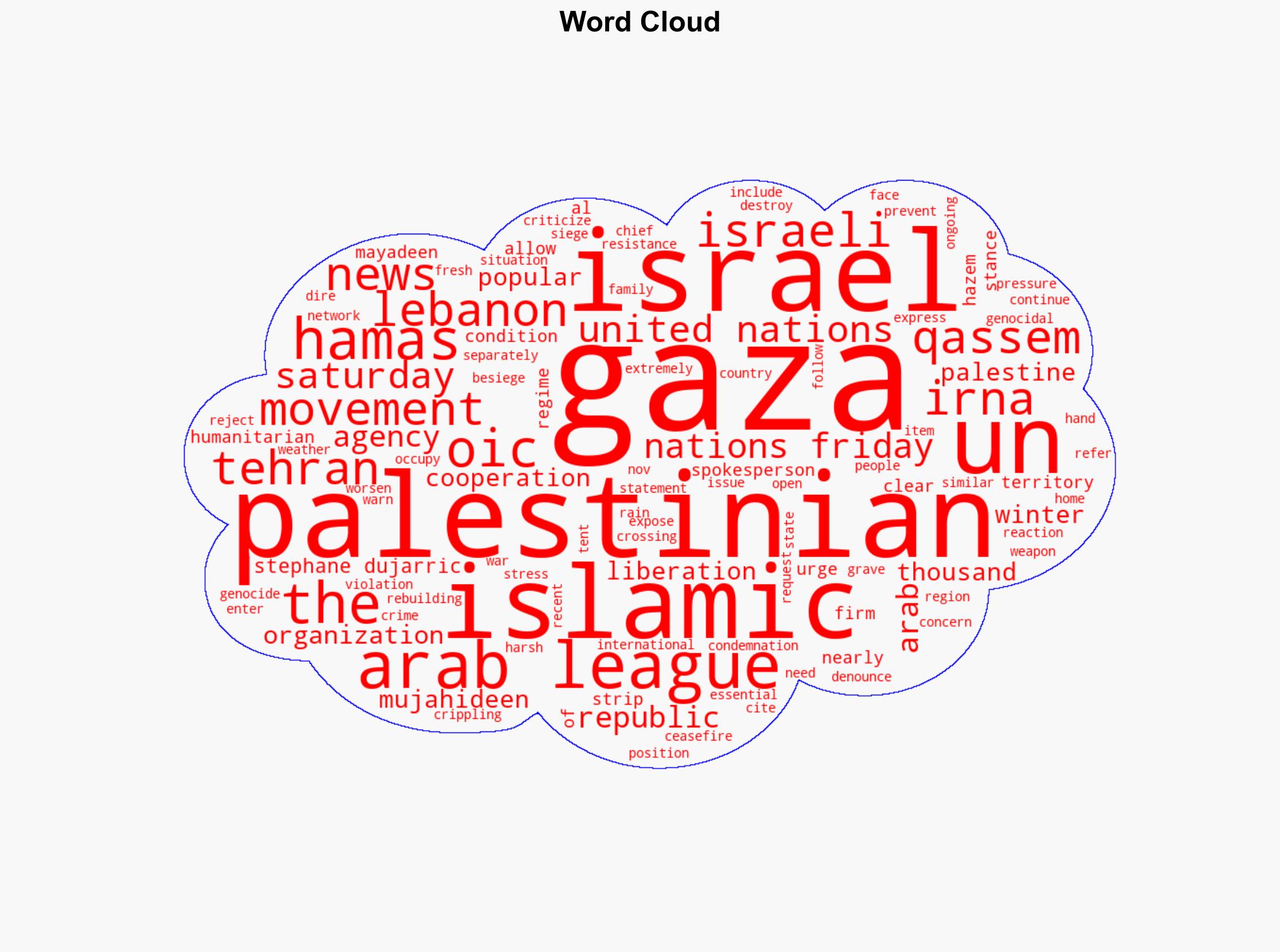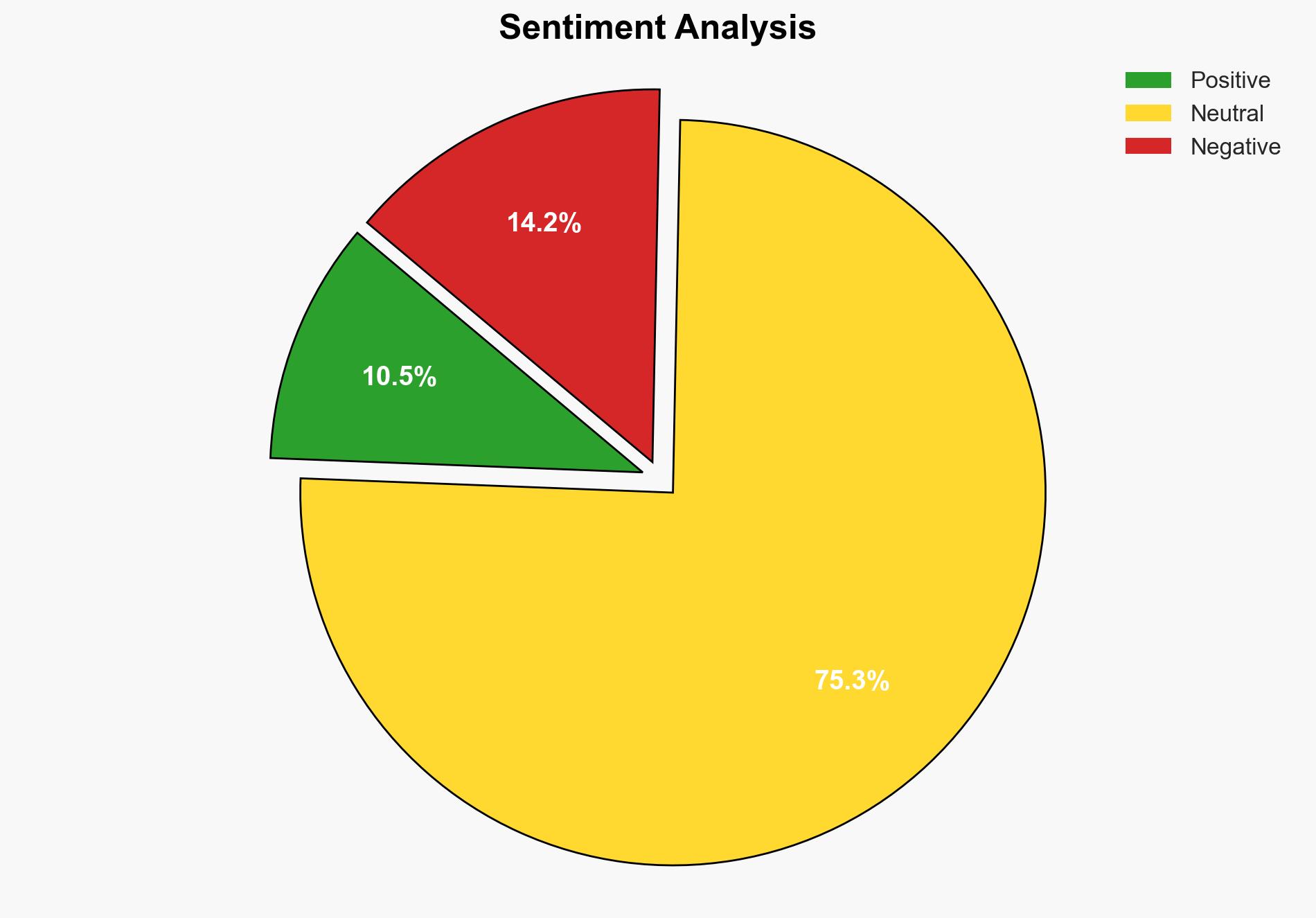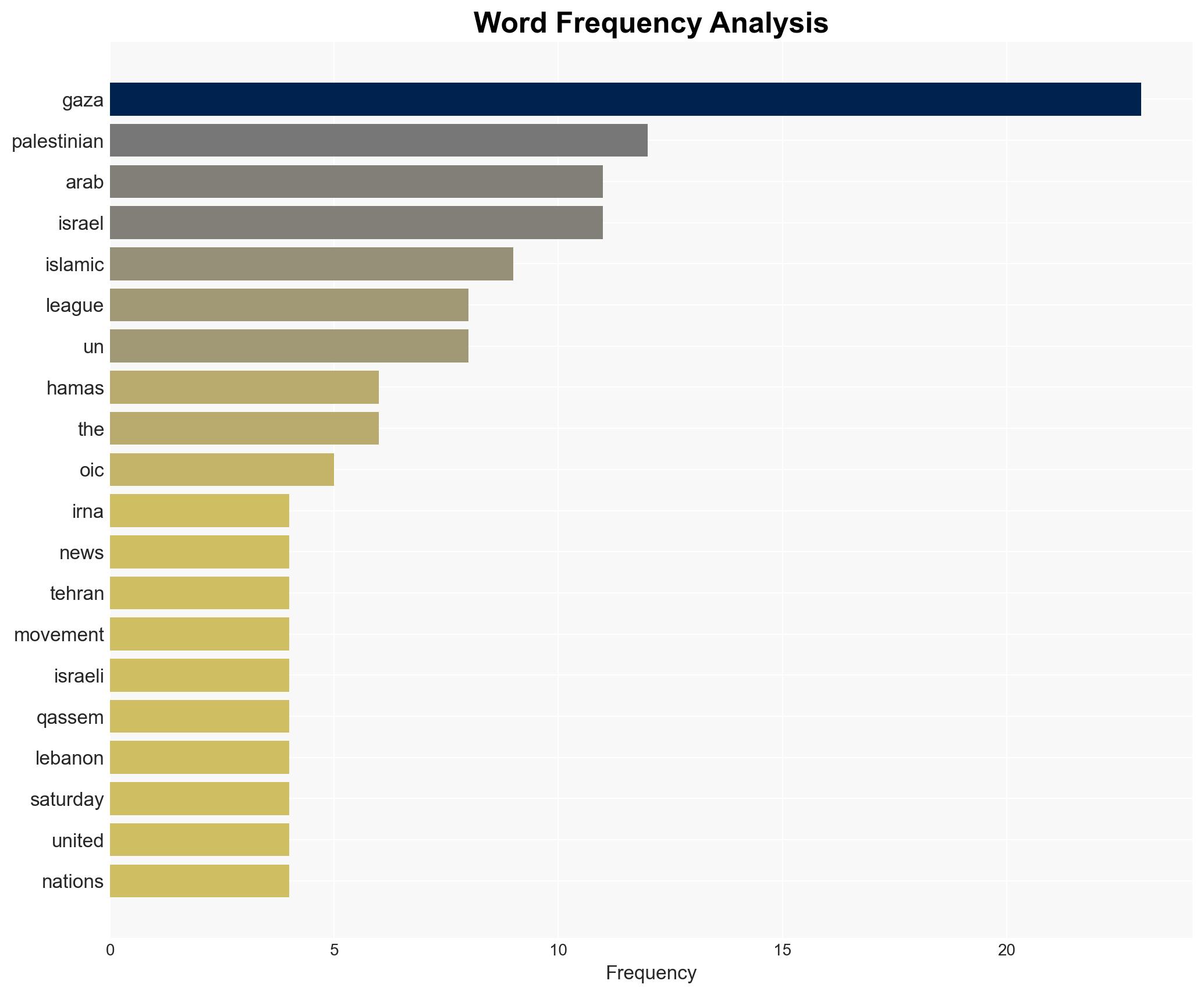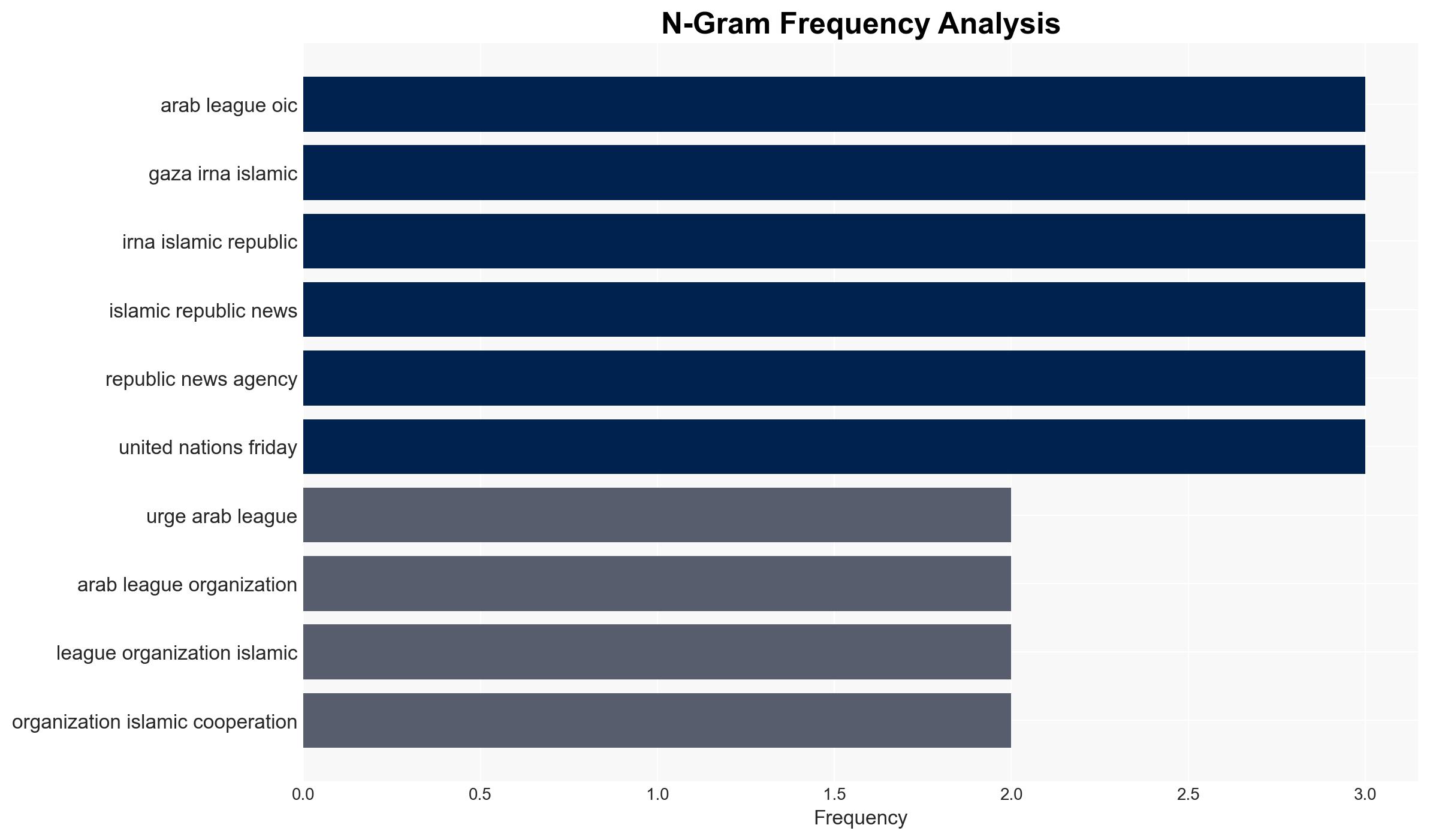Hamas urges Arab League and OIC to take firm stance on Gaza – Globalsecurity.org
Published on: 2025-11-16
AI-powered OSINT brief from verified open sources. Automated NLP signal extraction with human verification. See our Methodology and Why WorldWideWatchers.
Intelligence Report:
1. BLUF (Bottom Line Up Front)
With a moderate confidence level, the most supported hypothesis is that Hamas’s call for a firm stance from the Arab League and OIC is primarily aimed at increasing diplomatic pressure on Israel to alleviate the humanitarian crisis in Gaza. Strategic recommendations include enhancing diplomatic engagement with regional actors and monitoring potential shifts in regional alliances.
2. Competing Hypotheses
Hypothesis 1: Hamas is seeking to leverage regional organizations to increase diplomatic pressure on Israel, aiming to alleviate the humanitarian situation in Gaza and gain international sympathy.
Hypothesis 2: Hamas’s appeal is a strategic move to consolidate regional support and potentially escalate tensions, using the humanitarian crisis to rally broader Arab and Islamic support against Israel.
Hypothesis 1 is more likely given the immediate humanitarian concerns highlighted in the statements and the historical context of seeking international intervention in similar crises.
3. Key Assumptions and Red Flags
Assumptions: It is assumed that the Arab League and OIC have the capacity and willingness to influence the situation in Gaza. Another assumption is that Hamas’s statements reflect genuine concern for humanitarian issues rather than solely strategic positioning.
Red Flags: Potential bias in the source (IRNA) could skew the portrayal of events. The use of emotionally charged language (“genocidal war”) may indicate an attempt to manipulate international perception.
4. Implications and Strategic Risks
The call for action by Hamas could lead to increased diplomatic activity within the Arab League and OIC, potentially straining relations with Israel. There is a risk of escalation if regional actors perceive a lack of response as tacit support for Israel’s actions. Economically, prolonged instability in Gaza could impact regional trade and investment.
5. Recommendations and Outlook
- Engage in diplomatic dialogue with key Arab League and OIC members to understand their positions and potential actions.
- Monitor media narratives and public opinion in the region to assess shifts in support for Hamas and Israel.
- Best-case scenario: Increased diplomatic pressure leads to humanitarian relief and a de-escalation of tensions.
- Worst-case scenario: Regional tensions escalate, leading to broader conflict and economic disruption.
- Most-likely scenario: Diplomatic efforts result in limited humanitarian aid access, with ongoing political stalemate.
6. Key Individuals and Entities
Hazem Qassem, spokesperson for Hamas; Stephane Dujarric, spokesperson for the UN Secretary-General.
7. Thematic Tags
Structured Analytic Techniques Applied
- Cognitive Bias Stress Test: Expose and correct potential biases in assessments through red-teaming and structured challenge.
- Bayesian Scenario Modeling: Use probabilistic forecasting for conflict trajectories or escalation likelihood.
- Network Influence Mapping: Map influence relationships to assess actor impact.
Explore more:
National Security Threats Briefs ·
Daily Summary ·
Support us
·





